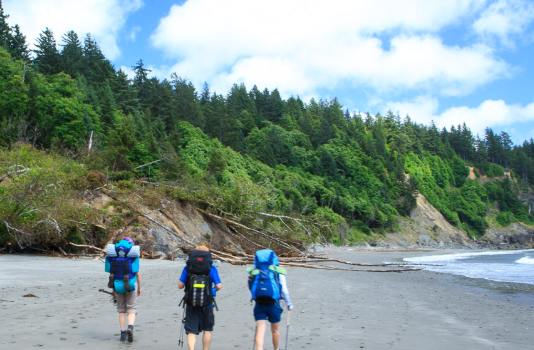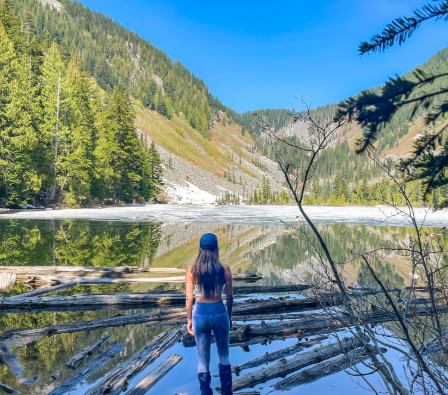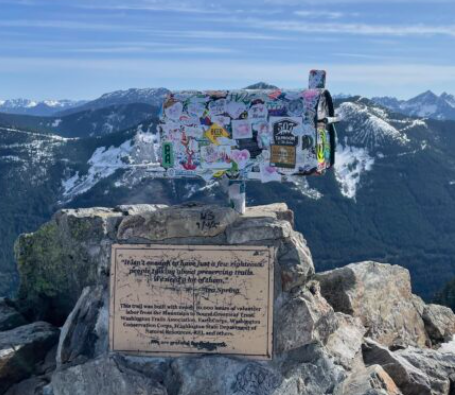
Exploring distant lands is often the first thing on our minds when planning adventures, but there’s something uniquely special about discovering the beauty of your own backyard. In my case, the Olympic Peninsula has become one of the most awe-inspiring destinations I’ve had the pleasure of experiencing. With its mix of rugged coastlines, towering rainforests, and glacier-capped mountains, Olympic National Park is a natural wonderland that truly stands out.
This trip, particularly the South Coast Wilderness Trail (SCWT), holds a special place in my heart. While it isn’t the toughest trek, it offers a mix of challenges, rewards, and spectacular views, making it one of my top backpacking experiences to date. And with proper planning, this trail can become one of your most memorable outdoor adventures.
Trail Overview
- Distance: 17.5 miles
- Difficulty: Moderate
- Location: Olympic Peninsula
- Best Hiking Season: May – September
Preparation is Key
Unlike some trails where you can spontaneously head out on a whim, the SCWT requires thorough planning. The terrain is diverse and requires careful consideration of tides, weather, and pacing. Before setting off, I highly recommend reading my detailed guide on planning this trail, which covers everything from shuttle logistics to campsite selection.
Though the planning process might seem daunting, the payoff is immense. The tranquility and beauty of the Pacific coast combined with the challenges of tide-dependent crossings will create an adventure you’ll cherish for years to come.
Day 1: Seattle to the Trailhead
Our journey started way earlier than ideal. The alarm blared at 4:30 am, and though the temptation to hit snooze was overwhelming, we knew that time was of the essence. We packed the car the night before, so we were ready to hit the road. A 30-minute ferry ride across Puget Sound provided a brief opportunity to rest, but after arriving in Port Angeles, we continued our drive to Oil City, the southern trailhead of the SCWT.
Once we arrived, we still had one final shuttle ride ahead. We’d booked a shuttle in advance to transport us to the northern trailhead at Third Beach. From there, we would hike south back to Oil City. After nearly 8 hours of travel, we were finally ready to begin our coastal adventure.
Trailhead to Toleak Peak (5.8 miles)
The trail starts through a dense forest where sunlight occasionally breaks through the canopy. Soon, the sound of crashing waves grows louder, and we emerge onto the sandy shores of Third Beach. The sight is exactly what you’d expect from the Pacific coastline—dark trees, misty skies, and the vast ocean stretching before us.
After a couple of miles of beach trekking, we began to climb the cliffside. Using ropes for assistance, we ascended a nearly vertical incline with 35-pound packs on our backs. Once at the top, we continued through forested paths before reaching Scott’s Bluff, where we had to time our tide crossing carefully. We made it just in time, continuing our journey toward Strawberry Point, where we planned to camp for the night. But with energy to spare, we decided to hike another mile to Toleak Point, offering us a quieter camping spot and breathtaking views for just $8 a night.
Day 2: Toleak Peak to Mosquito Creek (4.4 miles)
The morning greeted us with clear skies and the sound of ocean waves, making for a peaceful start. We planned our hike around the tides, knowing we couldn’t cross Mosquito Creek until low tide at noon. After some leisurely morning activities, we hiked to the creek, where I waded through the water, letting my boots get soaked. The creek was more of a river, but I didn’t mind—the water would dry out by the evening.
After a quick climb, we found the campsite, complete with fire pits and an ideal place to set up camp. That night, the sunset was stunning, with hues of yellow, orange, and red painting the sky as the sun dipped behind the ocean. It was one of those moments when you could only sit back and enjoy the beauty surrounding you.
Day 3: Mosquito Creek to Jefferson Cove to Oil City (4.9 miles)
On the final day, timing was crucial. The narrow beach sections required careful planning, and if we missed the tide window, we’d have to backtrack for an additional night. Fortunately, we made good progress through rocky terrain, navigating cliffs, vertical wooden stairs, and small rivers with ropes to assist our crossings.
We reached Jefferson Cove just as the tide was starting to come in. We took a moment to enjoy the small tide pools, watching starfish and anemones before the water’s return forced us to leave. The last leg of our journey was bittersweet. While it felt amazing to reach the end of the trail, there’s something magical about these wild coastal landscapes that made me reluctant to leave.
Finally, we reached the Oil City trailhead and the end of our adventure. We took a moment to relax on the beach, watching seagulls soar overhead, and reflecting on the beauty we had just experienced. After a brief but satisfying stop at the beach, we made our way back to the forest and eventually to our car, completing the loop.
Final Thoughts
The South Coast Wilderness Trail may be challenging, but the stunning landscapes, tide-dependent adventures, and peaceful camping spots make it worth every bit of effort. This backpacking trip through the Olympic Peninsula will leave you with lasting memories and a deeper appreciation for the Pacific Northwest’s wild beauty. Whether you’re a seasoned backpacker or just starting out, this trail offers an incredible journey into nature’s raw and unspoiled beauty.








